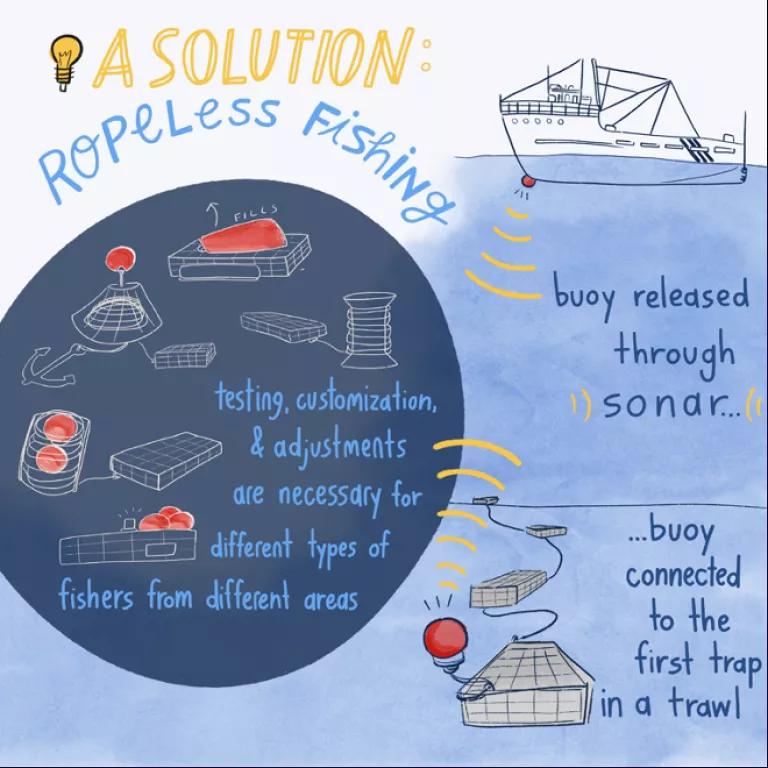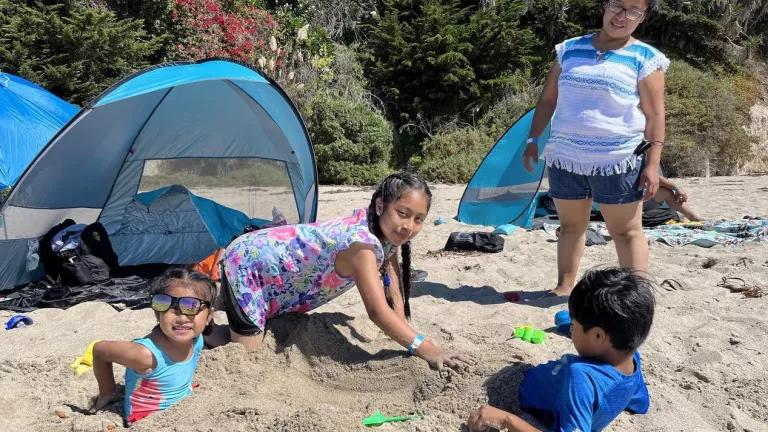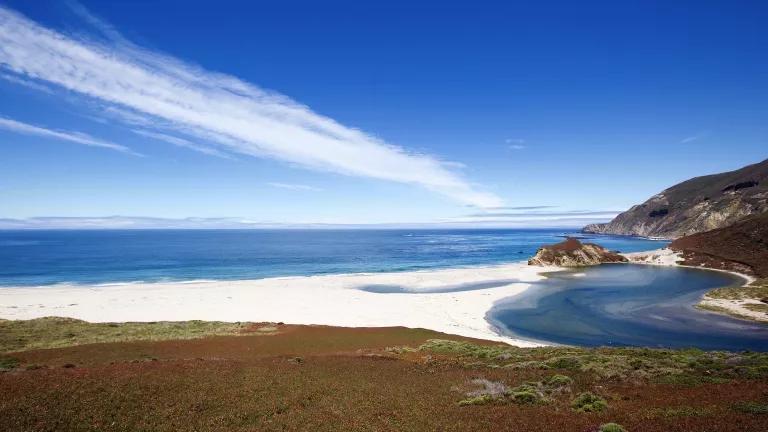California Should Strengthen Commitment to Ropeless Fishing Systems
An updated draft Conservation Plan issued by the state represents a positive step towards reducing entanglements of whales and sea turtles, but the state should do more to advance ropeless (or "pop-up") fishing systems.

Humpback whales are one of the species at risk from entanglement off California's coast
Entanglements of whales and sea turtles off the U.S. West Coast have increased in recent years and are threatening endangered and protected whales and sea turtles, including blue whales, humpback whales, and leatherback sea turtles. Vertical buoy lines associated with crab and lobster traps are among the main causes of entanglement of these species. Most of the entanglements documented off California where gear has been identified to a specific fishery have been attributed to the Commercial Dungeness crab fishery.
Ropeless fishing systems—called "pop-up" fishing systems on the West Coast—are a solution to this problem with a simple premise and huge implications for conserving marine life. By storing the vertical buoy line at the ocean floor alongside the crab trap, or replacing it entirely with a blow-up floatation device, the risk of entanglement is virtually eliminated while fishers can maintain their livelihood.
The updated draft Conservation Plan issued by the California Department of Fish and Wildlife (CDFW) supports the state’s application for a federal permit to authorize the California Dungeness crab fishery to operate legally. The plan describes fishery management and other conservation measures that will be required by the state to reduce the risk of entanglements in the fishery to sustainable and legally acceptable levels. The plan is therefore a critically important tool to ensure the continued viability of endangered species and the commercial fishing community.

Ropeless (or “pop-up”) fishing has the potential to virtually eliminate entanglement risk while keeping fishermen on the water.
Jessica Russo/NRDC
While we view the updated draft Conservation Plan positively, there are several areas that need to be addressed to ensure that the final version of the plan is strong and durable. Importantly, pop-up fishing systems should be emphasized in CDFW’s vision for reducing entanglements and promoting whale-safe fisheries off California’s coast. The plan should also clarify that CDFW will take an active role to make pop-up systems a practical and economically viable alternative to fishing gear that requires vertical buoy lines.
NRDC worked with our allies on West Coast entanglement to submit recommendations to CDFW in response to a public comment opportunity on the updated draft Conservation Plan. Specially, we recommended the plan should:
- Include a new section that outlines how CDFW intends to follow through with its commitment to making pop-up systems operational.
- Be updated to reflect information on successful trials from testing pop-up gear in California and other regions and include more accurate information on the current cost of pop-up units.
- Describe how concerns and challenges with pop-up system can be addressed (for example, enforcement concerns can be addressed through electronic monitoring).
- Obligate CDFW to invest a greater proportion of the plan’s budget to expedite the development of pop-up systems, including providing economic support to fishers to test the systems and transition their gear.
You can read the full letter here.

California should invest more resources to advance pop-up systems in collaboration with fishers.
California has an opportunity to take a significant leadership role in advancing pop-up fishing gear to meaningfully reduce the risk of whale and sea turtle entanglement off California’s coast. These advancements would also help build confidence that pop-up systems are a viable solution in other west coast states, the U.S. east coast, where they are critically needed to save the North Atlantic right whale from extinction, and internationally.
We therefore urge CDFW to take on our recommendations to help achieve the dual goals of maintaining both healthy fisheries and a thriving ecosystem off California’s coast.




